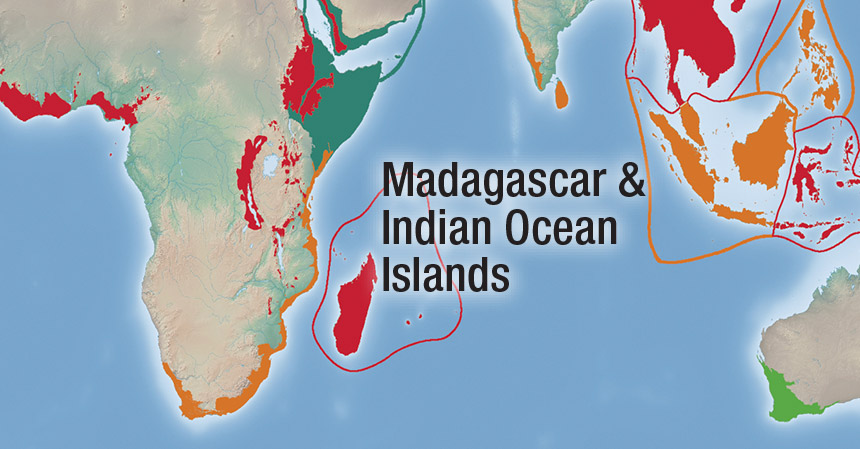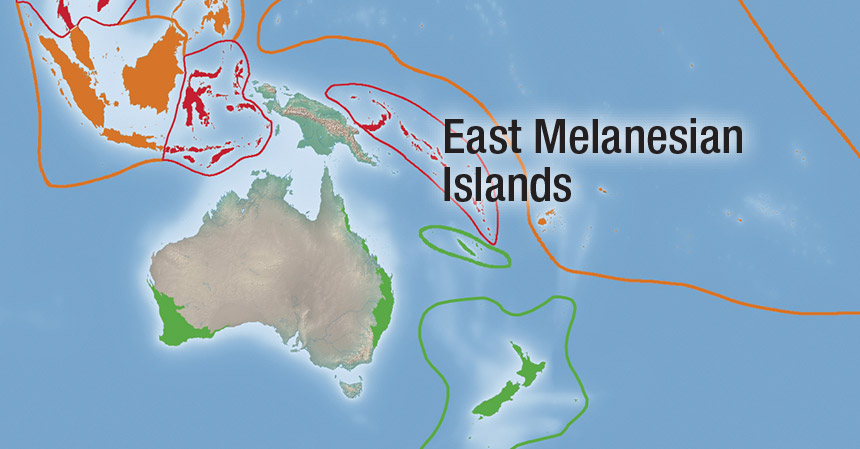Strengthening Local Conservation Leadership
CEPF funding also allowed us to provide training to community leaders. We are proud of their progress and we believe they will be the pillars of the management of Madagascar marine and coastal resources moving forward.
CEPF grants are often designed to raise the capacity of organizations in the biodiversity hotspots to implement conservation in their own communities. Building up these organizations allows them to make the best use of their skills and local knowledge, and positions them to continue leading local conservation long after CEPF funding is complete.
Madagascar and the Indian Ocean Islands Biodiversity Hotspot
Many coastal communities of Madagascar rely on fisheries for their food security and livelihoods. In 2003, Blue Ventures began working with fishing communities in southwest Madagascar that were reporting dramatic declines in their catches over recent decades. One village first experimented with closing off a small section of its octopus harvest area for several months. When the fishermen returned to the area, they found an increased number and size of octopuses, which led to a doubling of their incomes.

Communities nearby took notice and copied the technique. Building on the success of these closures, they were able to put in place a locally managed marine area (LMMA) overseen by nearby fishing villages. This approach spread around the country, ultimately growing to 64 LMMAs covering more than 12 percent of Madagascar’s coastal shelf.
To give the LMMAs a say in high-level policy decision-making, Blue Ventures helped the groups establish a formal network called MIHARI. The network allows LMMAs to advocate for themselves, builds the capacity of its members and raises the group’s profile on a national level.
“CEPF funding has allowed the network to develop to play a much greater role [in] representing the voices of fishing communities in the country,” said Vatosoa Rakotondrazafy, the MIHARI Network coordinator. “CEPF funding also allowed us to provide training to community leaders. We are proud of their progress and we believe they will be the pillars of the management of Madagascar marine and coastal resources moving forward.”
East Melanesian Islands Biodiversity Hotspot
In the East Melanesian Islands Biodiversity Hotspot, where civil society is still coming into its own, two recent CEPF grants trained local conservation leaders in a range of critical skills.
In the Solomon Islands, University of Queensland, Australia, implemented the island nation’s first-ever field training course focused on improving the skills of protected area managers and rangers. Participants from seven priority sites attended presentations from local and foreign conservation groups, listened to expert lectures on resource management and environmental law, and received a guidebook and course syllabus that allow training to continue after the end of the project.

The training also fostered collaboration among those who took the course, as participants initiated a resource management network for Solomon Islands conservation sites.
In 2016, the University of the South Pacific (USP) partnered with government, civil society and community organizations for a resource management course called the Pacific Islands Community-Based Conservation Course. The goals of the course were to develop professional skills, encourage community participation in conservation, improve critical thinking skills and develop capacity for sustainable resource use.
The course was held in three phases. Phase one was a four-week educational conference in Honiara, Solomon Islands. Phase two constituted four- to five-month practical projects in the participants’ home countries, in which they applied the knowledge gained at the conference in a real-world setting. In phase three, participants came together in Honiara again for a three-week, on-campus course during which topics covered in the first phase were reviewed, participants shared the projects they carried out in phase two, and additional modules were taught. Successful completion of the course resulted in a certificate and postgraduate credit at USP.
“This course was very timely, and we learned a lot from our course instructors and mentors,” said Lawrence T. Smith of Balel Conservation Group on Nissan Green Islands of Bougainville, Papua New Guinea. He added that he also benefited from the interaction with other course participants.
David Boseto, CEPF grantee and cofounder of Ecological Solutions, Solomon Islands, who was recognized as one of CEPF’s Hotspot Heroes in 2016 for his outstanding contributions to conservation, taught the final component of the course with his mentor, William Aalbersberg, director of USP’s Institute of Applied Science at the time of the course.
“The focus of the course is obviously capacity building, but with a specific focus on how to work with communities to achieve good resources management,” said Aalbersberg. “So there is an equal focus on personal skills as well as conservation and management tools.”
Photo Credits
Belo-sur-Mer aerial view, Madagascar. © Olivier Langrand
MIHARI conducts community leader training. © MIHARI Network/Dina Ramarozatovo
Tanna Island, Vanuatu. © Olivier Langrand






